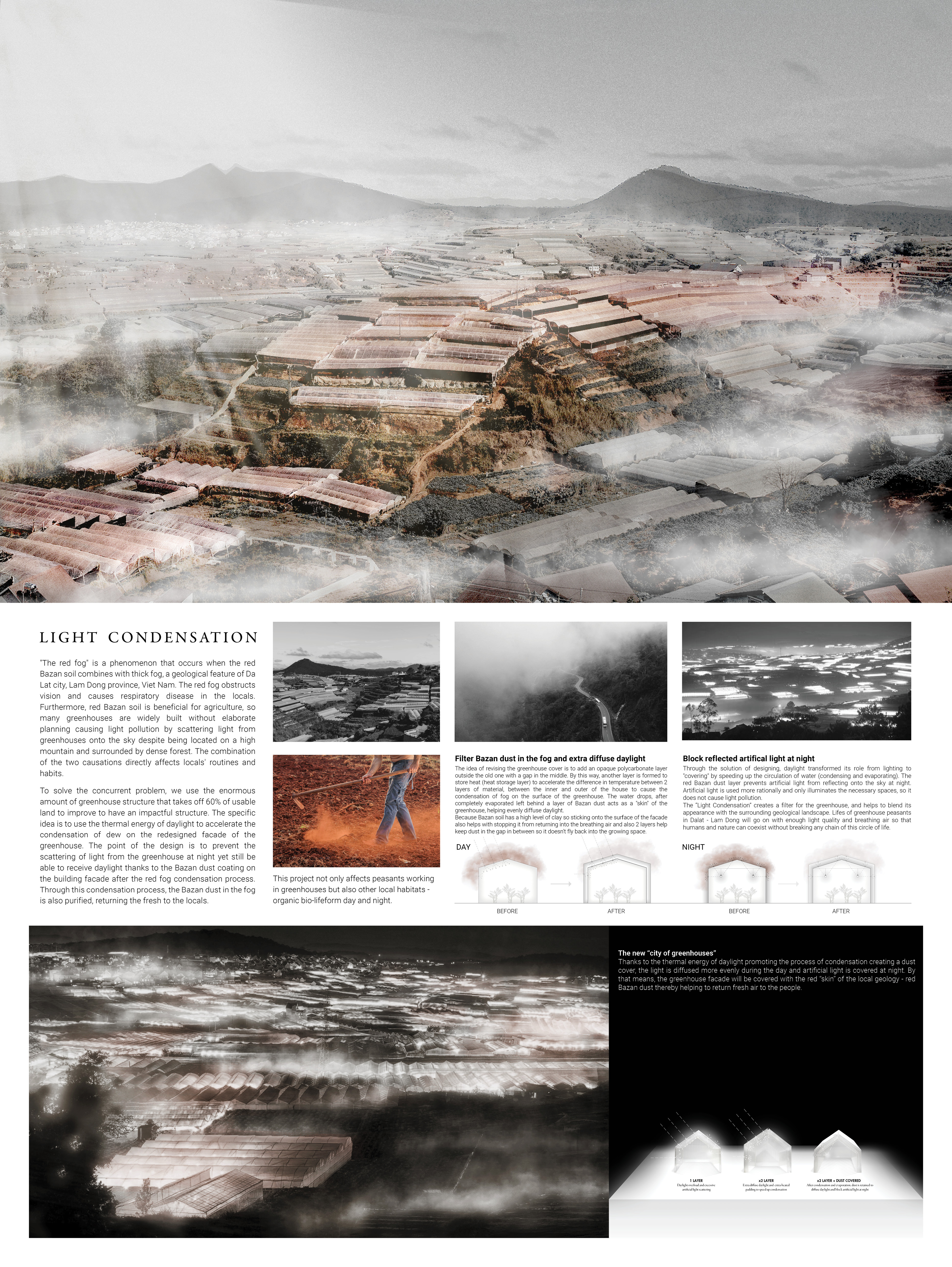Light Condensation

Category
Daylight investigations - Region 4: Asia and Oceania
Students
Hoang Chau Le
Hoang Long Nguyen
Kim Hong Huynh
Xuan Thy Nguyen Lam
School
University of Architecture Ho Chi Minh City
Country
Viet Nam
Download
Download ↓
“The red fog” is a phenomenon that occurs when the red Bazan soil combines with thick fog, a geological feature of Da Lat city, Lam Dong province, Viet Nam. The red fog obstructs vision and causes respiratory disease in the locals. Furthermore, red Bazan soil is beneficial for agriculture, so many greenhouses are widely built without elaborate planning causing light pollution by scattering light from greenhouses onto the sky despite being located on a high mountain and surrounded by dense forest. The combination of the two causations directly affects locals’ routines and habits.
To solve the concurrent problem, we use the enormous amount of greenhouse structure that takes off 60% of usable land to improve to have an impactful structure. The specific idea is to use the thermal energy of daylight to accelerate the condensation of dew on the redesigned facade of the greenhouse. The point of the design is to prevent the scattering of light from the greenhouse at night yet still be able to receive daylight thanks to the Bazan dust coating on the building facade after the red fog condensation process. Through this condensation process, the Bazan dust in the fog is also purified, returning the fresh to the locals.
The idea of revising the greenhouse cover is to add opaque polycarbonate layers with a gap in the middle. This way another layer is formed to store heat (heat storage layer) to accelerate the difference in temperature between 2 layers of material, between the inner and outer of the house to cause the condensation of fog on the surface of the greenhouse. The water drops, after completely evaporated left behind a layer of Bazan dust, creating a filter for the greenhouse, and helping to blend its appearance with the surrounding geological landscape. At the same time, this layer of dust also acts as a “skin” of the greenhouse, helping evenly diffuse daylight and preventing artificial light from reflecting onto the sky at night.
Because Bazan soil has a high level of clay so sticking onto the surface of the facade also helps with stopping it from returning into the breathing air and also 2 facades help keep dust in the gap in between so it doesn’t fly back into the growing space. Through the solution of designing, daylight transformed its role from lighting to “covering” by speeding up the circulation of water (condensing and evaporating).
This project not only affects peasants working in greenhouses but also other local habitats – organic bio-lifeform day and night. Lifes of greenhouse peasants in Dalat – Lam Dong will go on with enough light quality and breathing air so that humans and nature can coexist without breaking any chain of this circle of life.

































